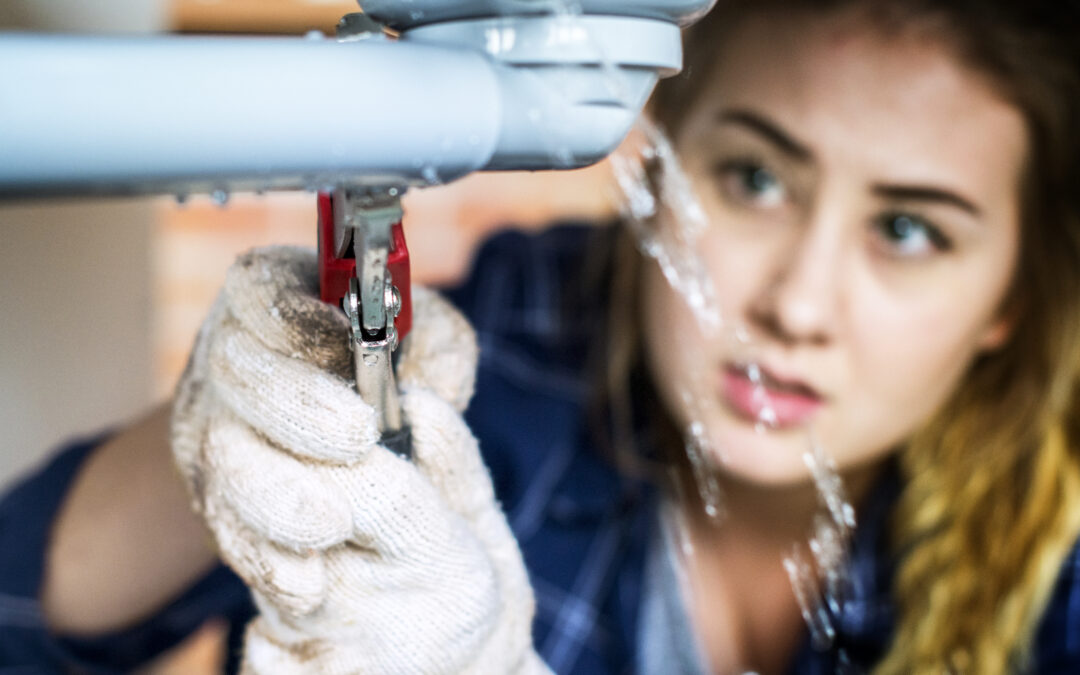Plumbing leaks, ranging from small drips to significant bursts, can cause a range of issues within your home. They not only lead to increased water bills and potential damage to your property but also contribute to mold growth and the waste of a valuable natural resource. Detecting and fixing leaks early is essential for maintaining the efficiency and health of your home’s plumbing system. As your Menlo Park, CA plumbing experts, Shoreway Plumbing is here to help guide you through the process of identifying and addressing common household plumbing leaks, enabling you to protect your home while saving money and resources.
How to Identify Early Signs of a Plumbing Leak
The ability to recognize early signs of a plumbing leak can mean the difference between a quick fix and a costly repair. Common indications of a leak may include:
- Unusually high water bills
- Damp or musty smells
- Discolored or peeling paint
- Mildew or mold growth
- Unexplained water stains or puddles
- Decreased water pressure
By staying attentive to these signs and conducting routine inspections of your home’s plumbing system, you can detect leaks early and take immediate action to minimize damage.
The Most Common Areas for Leaks to Occur
Some areas in your home are more prone to leaks than others. Identifying these common problem areas can help you target your inspection efforts and address issues proactively. Some of the most common locations for household leaks include:
- Faucets: Check for dripping or leaking around the base of the faucet, particularly in bathrooms and kitchens.
- Toilet: Inspect the base, supply line, and tank for leaks or signs of water pooling. An easy way to check for slow leaks is to add food coloring to the tank; if the color appears in the bowl after 30 minutes, you have a leak.
- Water heater: Look for any signs of corrosion or water pooling around the base of the unit.
- Dishwasher: Examine the dishwasher door, hose connections, and seals for leaks.
- Washing machine: Inspect hoses for cracks, bulging, or leaking, and check connections for tightness.
DIY Fixes vs. When to Call a Professional Plumber
While some small leaks may be within the realm of DIY repair, certain situations call for the expertise of a professional plumber. Here’s a general guideline on when to undertake a fix yourself and when to seek professional help:
DIY Fixes:
- Tightening connections on hoses and supply lines
- Replacing a worn faucet washer or cartridge
- Replacing toilet flapper or fill valve
- Cleaning out clogged aerators
Call a Professional:
- Persistent leaks despite DIY efforts
- Leaks located within walls or floors
- Evidence of water damage or mold growth
- Severe leaks causing flooding
Attempting to repair a leak without the necessary skills or knowledge can result in further damage and increased costs. When in doubt, call a professional to ensure the issue is resolved correctly and safely.
Preventative Measures to Avoid Future Leaks
Taking proactive steps to maintain your home’s plumbing system can help prevent future leaks and save money on repairs. Consider the following measures to keep your plumbing in good condition:
- Inspect your home regularly for signs of leaks
- Test toilets for slow leaks using the food coloring method
- Replace washing machine and dishwasher hoses every 5-7 years
- Insulate pipes in cold areas to prevent freezing and bursting
- Regularly check and replace worn parts, such as faucet washers and toilet flappers
Addressing Water Damage Caused by Leaks
When leaks result in water damage, it’s essential to act quickly to prevent potential health hazards and structural problems. Follow these steps to address water damage:
- Identify and repair the source of the leak
- Remove standing water using a wet-dry vacuum or mop
- Open windows and doors to increase ventilation and promote drying
- Use fans and dehumidifiers to speed up the drying process
- Clean and disinfect affected areas to prevent mold growth
For severe water damage, it’s best to consult with a professional restoration company.
Conclusion
By understanding how to identify and address common household plumbing leaks, you can protect your home from damage, save money on water bills, and maintain the efficiency of your plumbing system. Remember to stay proactive in your plumbing maintenance and do not hesitate to call a professional when necessary. With the right knowledge and resources, you can recover from leaks and prevent future issues.
If you suspect a plumbing leak in your Menlo Park, CA home or require assistance addressing a leak-related issue, count on the experts at Shoreway Plumbing to provide quality solutions to protect your property and peace of mind. Visit our website for more information or to schedule a consultation with one of our skilled technicians.

